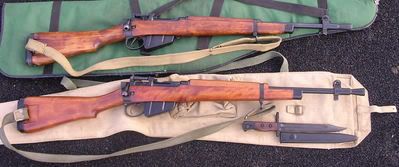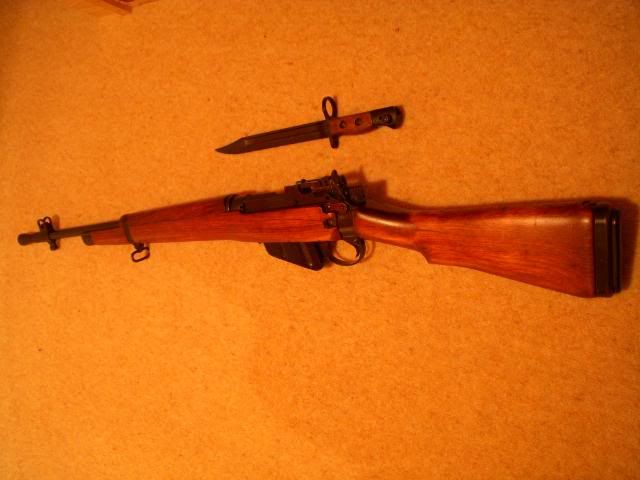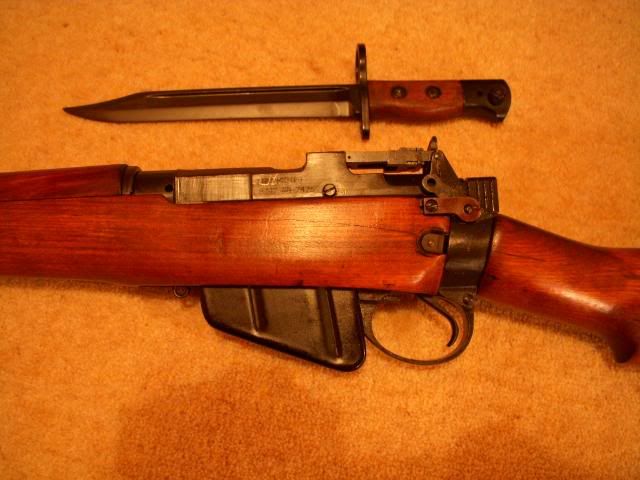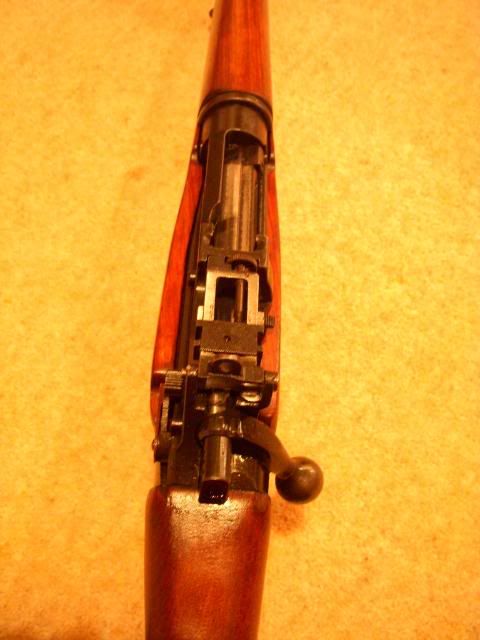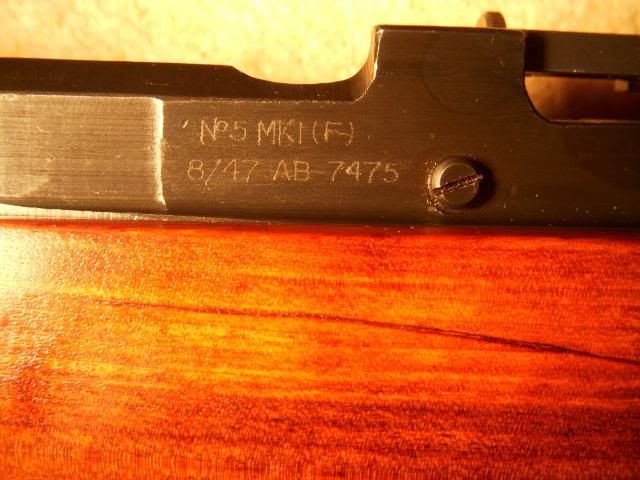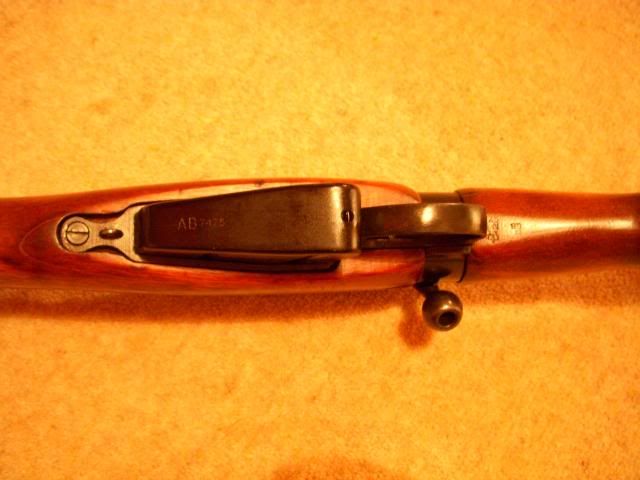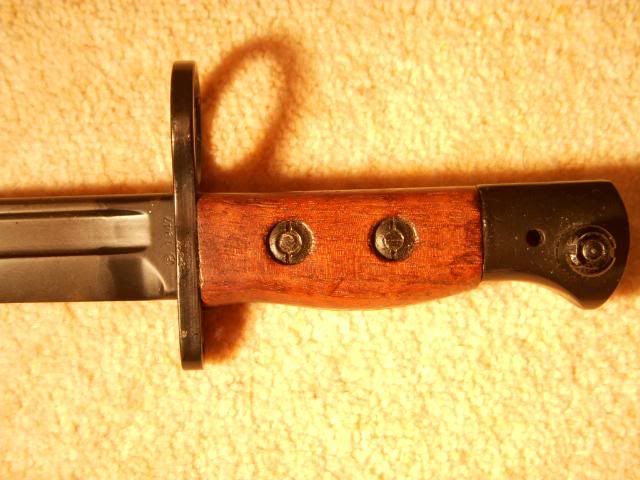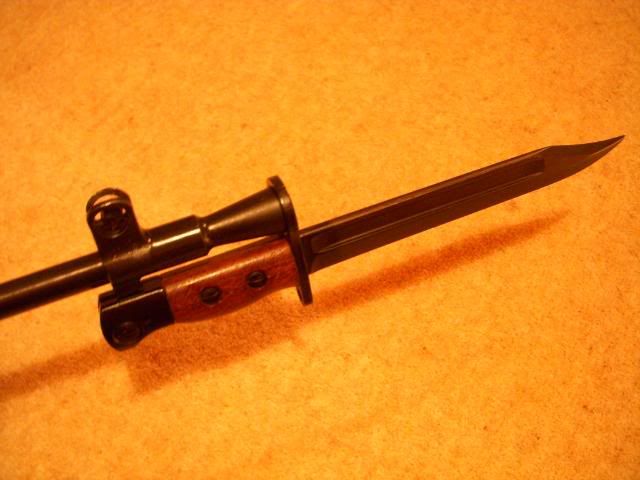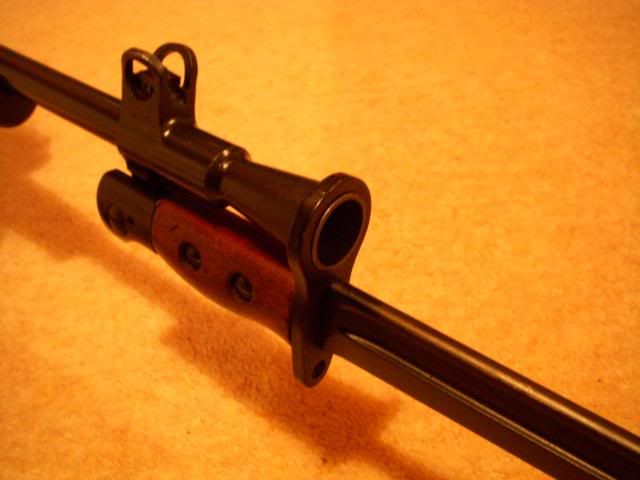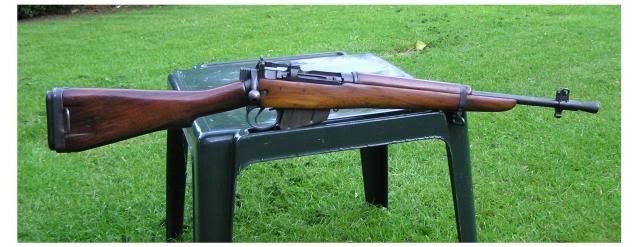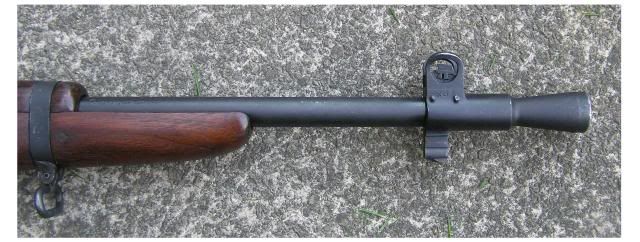GOTM OCT
Posted: Sun Oct 25, 2009 10:20 pm
There are no excuses for being late this month so I won’t offer any. This months GOTM is the Lee Enfield No 5 MkI. Short lived but in my opinion a classic.
Developed as a shorter, lighter version of the No 4 for combat in close environments such as the British found in South East Asia the name Jungle Carbine was given as a marketing ploy by an unknown American and has well and truly stuck.
Another thing that has stuck with the No 5 is the myth of a wandering zero. Everywhere this rifle is discussed on the internet the myth pops up. Some profess to have shot many No 5s in their lifetime, sometimes with hundreds of rounds and never encountered it. Some say it was a story made up to hasten the demise of the bolt action rifle and facilitate the introduction of the semi-automatic rifle within the British military. Personally I don’t know what to believe but most myths have a grain of truth somewhere, maybe this one does too.
The No.5 began life as the ‘No.4 lightened rifle’ Development began in mid to late 1943. Production ended in 1946 officially although 1947 marked examples have been seen. Production ran to about 169807+ according to Skennerton at Fazakerley and 81327+ at BSA Shirley. It was to be manufactured in Canada but the orders were cancelled and other than a few prototypes nothing was produced.
.
My No 5 was produced by Fazakerley in October 1944. This makes it relatively early production with the first examples coming out in February of that year. The first 1,000 test rifles had an FE prefix with a 3 digit number. Following rifles used 4 digits, initially with no prefix then an alpha prefix starting with A and moving down the alphabet. After Z the double prefix was used down to AC, although Skennerton records an AF prefix rifle as having been examined. Shirley rifles commenced production in 1945 with a double alpha prefix and 4 digits.
Most differences between a No.4 and a No.5 are fairly obvious. The No.5 has a shortened for-end, a distinct butt with a sling loop on the side, a flash hider and a shortened handguard. The butt plate incorporates a rubber butt pad and various lightening cuts were also made to the metal components. More subtle changes were the rear sight being graduated only to 800 yards, the handguard is retained by a lipped ring, similar to but slightly different from the No.4 ring. Lightening of the bolt (drilled out bolt knob) and lightening of the trigger guard are also less obvious changes.
All up No.5 ended up 5 inches shorter and 1lb 14oz lighter than the No.4.
The No.5 also received a new bayonet with a bowie style blade. The bayonet bar was circular in cross section to fit the new bayonet and the muzzle ring significantly larger to fit the flash hider.
My No.5 from the right and left sides –


The distinctive flash hider –

The rear sight, as noted previously graduated to only 800 yards. There was also a pressed metal version.

A shot of the action from above. This rifle is one of the few I’ve seen with a No.3 bolt head.

View of the beltway from above. Obviously there was more concern with function than looks.

The lightened bolt knob. I believe this was also done fairly regularly by another factory (Maltby ?) although with a different diameter hole.

Rifle is also marked with the rust stamp –

While I prefer all matching rifles in the No.5’s case I made an exception. Woodwork, receiver and magazine all carry the same number but the bolt is un-numbered –





Speaking of woodwork, the handguard is also lightened and there is also the previously mentioned butt with the butt pad and sling loop.


Some extraneous markings to the barrel and the butt. I haven’t come across a unit that fits the butt marking but if anyone has any information or guesses I’d be interested to hear then.


The lightening scallops on the barrel. I’ve been told the engraving of the serial number here was common practice.

Finally the No.5 bayonet. In personal preferences I’d rank this only second behind the P1903 bayonet.







Almost forgot the obligatory bore shot –

One shot I have failed to include (because I fogot to take it) is the side on shot of the action to show the lightening of the rear of the action under the rear sight. Looking at a No.5 side on one can see clear daylight under the rear sight unlike a No.4 where little daylight is visible.
Developed as a shorter, lighter version of the No 4 for combat in close environments such as the British found in South East Asia the name Jungle Carbine was given as a marketing ploy by an unknown American and has well and truly stuck.
Another thing that has stuck with the No 5 is the myth of a wandering zero. Everywhere this rifle is discussed on the internet the myth pops up. Some profess to have shot many No 5s in their lifetime, sometimes with hundreds of rounds and never encountered it. Some say it was a story made up to hasten the demise of the bolt action rifle and facilitate the introduction of the semi-automatic rifle within the British military. Personally I don’t know what to believe but most myths have a grain of truth somewhere, maybe this one does too.
The No.5 began life as the ‘No.4 lightened rifle’ Development began in mid to late 1943. Production ended in 1946 officially although 1947 marked examples have been seen. Production ran to about 169807+ according to Skennerton at Fazakerley and 81327+ at BSA Shirley. It was to be manufactured in Canada but the orders were cancelled and other than a few prototypes nothing was produced.
.
My No 5 was produced by Fazakerley in October 1944. This makes it relatively early production with the first examples coming out in February of that year. The first 1,000 test rifles had an FE prefix with a 3 digit number. Following rifles used 4 digits, initially with no prefix then an alpha prefix starting with A and moving down the alphabet. After Z the double prefix was used down to AC, although Skennerton records an AF prefix rifle as having been examined. Shirley rifles commenced production in 1945 with a double alpha prefix and 4 digits.
Most differences between a No.4 and a No.5 are fairly obvious. The No.5 has a shortened for-end, a distinct butt with a sling loop on the side, a flash hider and a shortened handguard. The butt plate incorporates a rubber butt pad and various lightening cuts were also made to the metal components. More subtle changes were the rear sight being graduated only to 800 yards, the handguard is retained by a lipped ring, similar to but slightly different from the No.4 ring. Lightening of the bolt (drilled out bolt knob) and lightening of the trigger guard are also less obvious changes.
All up No.5 ended up 5 inches shorter and 1lb 14oz lighter than the No.4.
The No.5 also received a new bayonet with a bowie style blade. The bayonet bar was circular in cross section to fit the new bayonet and the muzzle ring significantly larger to fit the flash hider.
My No.5 from the right and left sides –


The distinctive flash hider –

The rear sight, as noted previously graduated to only 800 yards. There was also a pressed metal version.

A shot of the action from above. This rifle is one of the few I’ve seen with a No.3 bolt head.

View of the beltway from above. Obviously there was more concern with function than looks.

The lightened bolt knob. I believe this was also done fairly regularly by another factory (Maltby ?) although with a different diameter hole.

Rifle is also marked with the rust stamp –

While I prefer all matching rifles in the No.5’s case I made an exception. Woodwork, receiver and magazine all carry the same number but the bolt is un-numbered –





Speaking of woodwork, the handguard is also lightened and there is also the previously mentioned butt with the butt pad and sling loop.


Some extraneous markings to the barrel and the butt. I haven’t come across a unit that fits the butt marking but if anyone has any information or guesses I’d be interested to hear then.


The lightening scallops on the barrel. I’ve been told the engraving of the serial number here was common practice.

Finally the No.5 bayonet. In personal preferences I’d rank this only second behind the P1903 bayonet.







Almost forgot the obligatory bore shot –

One shot I have failed to include (because I fogot to take it) is the side on shot of the action to show the lightening of the rear of the action under the rear sight. Looking at a No.5 side on one can see clear daylight under the rear sight unlike a No.4 where little daylight is visible.
